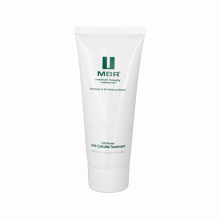Why does cellulite happen and how to get rid of it?
It’s estimated that nearly 80% of all women face the issue of cellulite.
In its beginning phase, “orange skin” becomes noticeable only when you pinch your skin together. In its advanced phase, these unattractive dimples can be found on the buttocks and upper thighs both when sitting and standing. Cellulite is a menace for full-figured and slender women alike.
For slender women, a lack of tonicity is typically the root cause of cellulite. If the skin, covered by fatty tissue, loses its tonicity, the wrinkles and bumps lying below become visible. This results in peaks and valleys that can reflect the appearance of a quilted mattress.
For full-figured women, cellulite often develops due to the increase in the volume of fatty tissue, forming cushions that arch against the limits of the elastic connective tissue network.
Why do you get cellulite?
Cellulite develops due to hormone-conditioned, gender-typical skin build-up and gender-specific fat distribution. For men, excess calories first appear in the stomach area. For women, they appear in the hips and upper thighs.
Each person’s number of fat cells is predetermined in early childhood. Later, the fatty tissue increases as our cells grow and become enlarged (in fact, they can become up to ten times larger). The stronger these fat cells grow, the greater the pressure on the connective tissue, which becomes stretched and inelastic.
Enlargement of the fat cells causes the blood capillaries to narrow, slowing blood circulation and interrupting lymph flow.
Reduced circulation leads to a drop in the tissue temperature, thereby impairing metabolic activity.
The result:
- Toxins begin to collect, over acidify the tissue, and bond to water
- Fat cushions remain stagnant
- Due to poor micro-circulation, the cellulite-affected areas feel cold
At the same time, the connective tissue (comprised of collagen and elastin fibers arranged in parallel, not networked like male connective tissue) slackens against the weight of the enlarged fat cells. This causes the epidermis to form waves that curve up, subsequently giving the appearance of a rough orange.
How can you get rid of cellulite?
- Consistent daily care with MBR Medical Beauty Research’s Cell-Power Anti-Cellulite Treatment
- Staying active by exercising, walking, or anything that creates movement and promotes the supply of oxygen to the affected areas
- Eating a healthy diet that’s rich in Vitamin C, drinking at least 50 oz. of liquid each day, and consuming several small snacks throughout the day to keep metabolism and blood sugar stable
- Weight reduction
- Stimulating circulation with massage and/or hydrotherapy (such as using a showerhead to massage the buttocks and legs or relaxing in a lukewarm bath)

